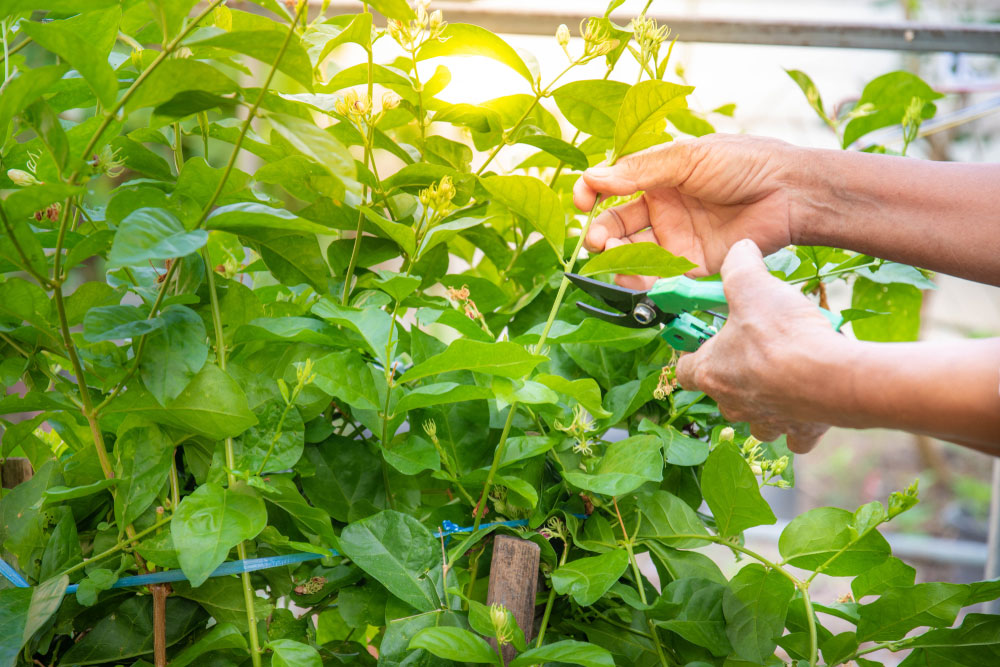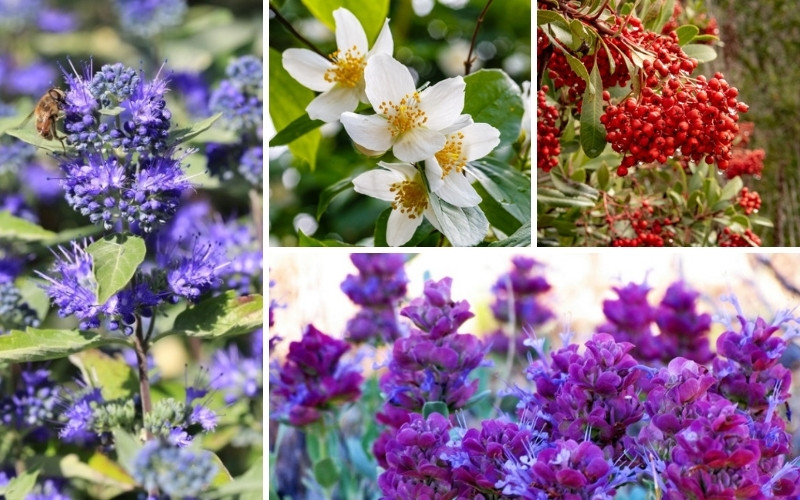
Jasmine is a popular decorative plant that produces beautiful white flowers when properly cared for and propagated.
If you want to grow jasmine in your home or yard, you can propagate them from cuttings off an adult plant and save yourself a little money on seeds and buying plants.
This process requires only a handful of steps and is fairly easy to understand.
Step One: Make the Cuts

Find a healthy stem that crew in the current year, one that is green and sprouting leaves. The stem should be firm but flexible, which makes it easier to cut and work with when propagating.
You can take multiple cuts off of the plant as long as you don’t remove over one-third of the plant.
Taking multiple cuts improves your chances of successfully growing another jasmine plant and may even let you grow several plants. Each cut should be around 4-6 inches and cut just below a leaf stem.
Remove the leaves from the bottom of the cutting, leaving only the top leaves at the stem’s end.
Step Two: Preparing Your Pot
Now, choose a planter about 6-8 inches in diameter with drainage holes at the bottom where water can easily flow out. You’ll only need one pot for multiple cuttings because you’ll transplant each into separate pots after they’ve grown roots. Place potting soil, sand, and perlite in the pot.
Carefully water the soil until water comes out to the bottom of the drainage holes. This heavy initial watering will give your jasmine enough water to start growing.
Later, you’ll use far less water when caring for your jasmine to avoid drowning them.
Step Three: Plant Each Stem
Use a small pencil, straw, or similar device to push a planting hole into the soil for each of the cuttings you want to grow. The hole should be deep enough to cover the bottom one-third of the plant and wide enough so that the cutting doesn’t rub against the pot. Give at least two inches between each cutting.
Dip the end of each jasmine plant cutting in a root hormone powder or liquid and then place them in the bottom of individual holes. Hold the stem straight until you fill its hole with soil. Place a plastic bag around the plants to help them gather moisture and put the plant in sunlight because jasmine loves a lot of sun.

Step Four: Care for Your Plant
Open the bag at least once a day to check the soil’s moisture level. If you notice it is dry, spritz the plants with water to help them grow properly. Keep the jasmine in the sun for at least 6-8 hours every day and adjust its position if it doesn’t get enough sun in its location.
Care for your plants in this way for at least 4-6 weeks to ensure that each gets time to grow roots. If six weeks pass and a plant hasn’t grown roots, it won’t. Take out any plants that have failed to grow roots and throw them away. Any others can be transplanted into individual pots.

Step Five: Transplanting the Cuttings
Purchase hanging baskets or pots for each jasmine plant you plan on transplanting. Hanging baskets are easier to position and work well for jasmine plants and ensure that they get enough sunlight. Fill the pot with all-purpose potting soil and leave a small section open in the center.
Carefully remove the soil bulb around each plant’s roots and place the roots in the soil in the hanging basket. Pat the soil down around the roots and water it when the soil feels dry. Keep them in sunlight and fertilize them at least once per month to help them grow effectively.






